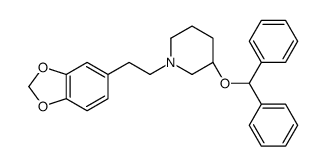| In Vivo |
Zamifenacin exhibits moderate oral bioavailability (mouse 26%, rat 64%, dog 100%) and Cmax (mouse 92, rat 905, dog 416 ng/mL) following oral administration (mouse 13.2, rat 20 and, dog 5 mg/kg)[2]. Zamifenacin exhibits terminal elimination half-lives (mouse 2.1, rat 6.0 and, dog 1.1 h) due to high plasma clearance (68, 35, and 39 mL/min/kg respectively combined with large volumes of distribution (12.5, 19.0, and 3.5 L/kg respectively) following intravenous administration (mouse 5.3, rat 5.0 and, dog 1.0 mg/kg)[2]. Animal Model: Male CDl mice (mean weight 23 g)[2] Dosage: 5.3 mg/kg for i.v.; 13.2 mg/kg for oral (Pharmacokinetic Analysis) Administration: Intravenous administration and oral administration Result: Oral bioavailability (26%), Cmax (92 ng/mL), T1/2 (2.1 h). Animal Model: Male and female CD rats (mean weight 210 g)[2] Dosage: 5.0 mg/kg for i.v.; 20 mg/kg for oral (Pharmacokinetic Analysis) Administration: Intravenous administration and oral administration Result: Oral bioavailability (64%), Cmax (905 ng/mL), T1/2 (6.0 h). Animal Model: Male and two female beagle dogs (13-16 kg)[2] Dosage: 1.0 mg/kg for i.v.; 5 mg/kg for oral (Pharmacokinetic Analysis) Administration: Intravenous administration and oral administration Result: Oral bioavailability (100%), Cmax (416 ng/mL), T1/2 (1.1 h).
|
